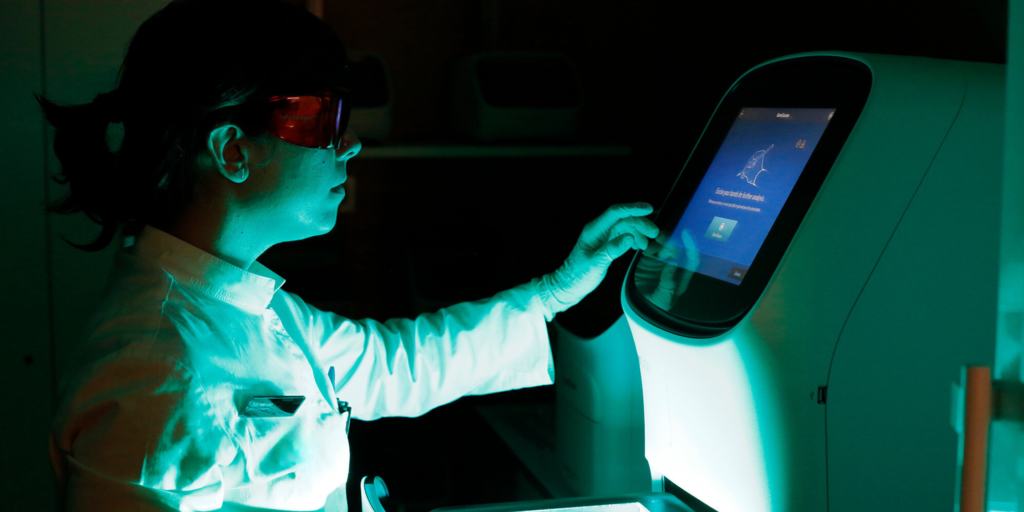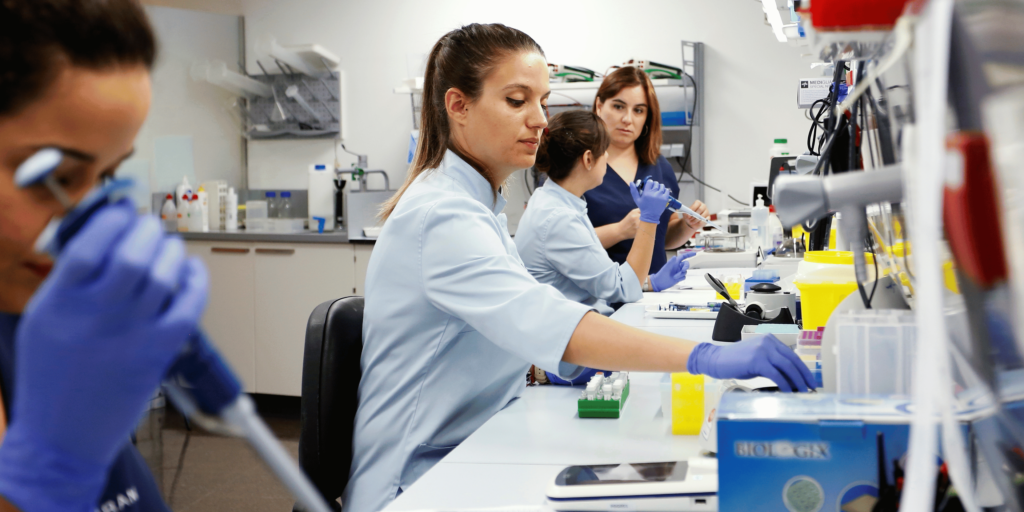
The new advances in Miranza’s R&D&I area
Miranza’s R&D&I area applies artificial intelligence and genetic editing to improve the treatment and diagnosis of ocular disorders, some of which are yet to have a cure
Over 200 professionals collaborate with Miranza in this department, promoting over one hundred projects to test and validate drugs, devices and surgical and diagnostic techniques
Artificial intelligence, organoids (3D cell cultures), virtual 3D eyes… Despite seeming like science fiction, these advances are already being revolutionarily applied in the field of ophthalmology. In Miranza’s Research, Development and Innovation (R&D&I) area, coordinated by Laura González and doctors Rafael Navarro and Esther Pomares, there are currently 100 research projects underway to advance in the treatment of vision diseases, some of which are yet to have a cure.
Experimentation with new technologies
The trials involve over 200 professionals (ophthalmologists, researchers, optometrists, nurses, etc.) from our centres. This ground-breaking research includes three international multicentre trials funded by the European Union, which aim to prove and test new treatment options for diseases affecting the retina, the cornea or the optic nerve, among others..
This is the case of Human Eye, in which a device is developed to treat diseases that cause corneal irregularities, promoted by the IMO Grupo Miranza Foundation, and “VEMoS” -Virtual Eye Model System–, which consists of the creation of a 3D virtual eye that simulates the results in patients who are to have refractive surgery, headed by Vissum Grupo Miranza (Alicante)
Furthermore, “we have just started a very promising project, called BE-LIGHT, to study the use of optical and photonic technologies and artificial intelligence in the understanding, diagnosis and treatment of eye diseases”, explains Laura González, executive director of R&D&I at Miranza. The project includes over ten European organisms related with medicine, technology and training..
González adds that “we are particularly excited because it is following in the footsteps of BeOptical, a project that has now ended and, like this one, in which we at IMO Grupo Miranza Barcelona “took part” and which led to the development of devices with new preventive medicine technology, validated at the Barcelona clinic, “something that we also hope to achieve with this new project, in which multidisciplinary scientific and clinical professionals are working”, she concludes.
Artificial intelligence for glaucoma
Along these lines of technology, researchers from Miranza are also studying the application of artificial intelligence to improve the eyesight quality of patients with glaucoma. “We do this using software that takes a step forward in treatment personalisation. We develop an intelligent assistant for easier decision-making and, alongside this, to foresee the intraocular pressure of the glaucoma surgery patient after 6 months”, explains Dr. Haritz Urcola, principal investigator of the trial, which is being conducted at Miranza Begitek (San Sebastián), in collaboration with Deusto University.
This is key because, as Dr Urcola explains, “high intraocular pressure is the main risk factor of glaucoma and the only factor that can be modified when monitoring the evolution of the disease”.
Advances for incurable diseases

And what about untreatable eye diseases? Dr Esther Pomares, coordinator of the Miranza Genetics Department, heads promising basic research projects to find a solution to incurable hereditary diseases that could cause blindness, such as retinitis pigmentosa.
According to the geneticist, “we have recently been able to precisely correct genetic alterations in cells from patients affected by retinal dystrophies in our molecular biology laboratory at IMO Grupo Miranza Barcelona, using the revolutionary cut-and-paste genetics technique CRISPR”.
The Miranza research team has conducted gene editing trials using cells from the skin of the patients themselves, has “reprogrammed” them to stem cells, and has applied the CRISPR technique to them to correct the mutations responsible for the disease. They have also generated retinal organoids using the stem cells of patients to delve further into the study of the molecular mechanisms of retinal dystrophies, all at the ground-breaking Cell Culture and New Therapy Experimentation Area of the laboratory.
“The latest advances in gene and cell therapies are extremely promising and we are increasingly close to applying them to patients”, adds Dr Pomares.
Controlling myopia
Another commitment of the R&D&I area is the control of myopia in children (it is estimated that over 50% of the population will be short-sighted by 2050). Several of the Group’s clinics are taking part in trials on slowing down the progression of this visual defect in children.
Furthermore, to find out more about high myopia or myopia magna, Dr Pomares reveals that “the first multicentre trial promoted by Miranza is investigating the genetic causes of this type of myopia (over 6-8 dioptres) in the Spanish population”.
The work is ongoing, with the participation of professionals from the clinics and the collaboration of patients and their relatives. Lastly, González concludes that “these research projects are extremely exciting and hopeful for our patients”.